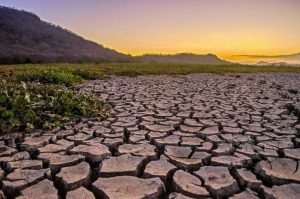
In 2023, the United Nations released a report revealing that extreme weather disasters had incurred economic losses totaling $4 trillion, with significant impacts felt across various sectors, notably agriculture. Credit: Miriet Abrego / IPS
By Esther Ngumbi
URBANA, Illinois, US, Apr 10 2024 – Recently, the United Nations in collaboration with the World Meteorological Organization released a report that highlighted the impacts of climate change including on agriculture.
Additionally, the report highlighted the economic losses and other impacts extreme weather events such as floods, droughts, heatwaves, and tropical cyclones have on agriculture.
Indeed, globally, and in the United States, record-breaking, extreme weather disaster events, such as flooding, storms, and droughts, have become extremely costly and excessively too common.
In dealing with record-breaking extreme weather events that directly and indirectly impact the agricultural sector, we must choose to launch multipronged solutions that leverage data, incorporate newly available climate solutions and innovations, and create incentives to amplify the adoptions of these solutions
According to the National Oceanic and Atmospheric Administration, 377 events have resulted in losses of over $2.6 trillion have been documented. In 2023, the United Nations released a report showing that extreme weather disasters have resulted in economic losses worth $4 trillion, including in the agricultural sector.
Undoubtedly, this should worry all since the agricultural sector is vital for meeting our food and nutrition security needs. In the United States, for example, agriculture, food, and related industries contribute approximately $1.4 trillion to the gross domestic product.
In Asia, Africa, and many other continents, the agricultural sector is equally important, and further serves as a source of employment, and thus a poverty-reducing sector. According to UN FAO, agriculture accounts for over 35 percent of Africa’s GDP.
Emerging, therefore is the need for multipronged efforts to help to mitigate the impacts these climate change associated disasters have on agriculture.
First. Inform agricultural sector stakeholders including farmers about newly launched technologies and most recent science-backed climate solutions.
Researchers, entrepreneurs, and innovators continue to bring to life novel technologies, climate solutions, and innovations that can be deployed to help to mitigate climate change impacts.
From artificial intelligence powered prediction models that can reliably forecast when disasters are going to happen, prompting stakeholders to act, to climate resilient crops, to regenerative agricultural practices such as cover cropping, mulching, and digging trenches that can help mitigate the impacts of drought and flooding to indoor agriculture that cushions agricultural crops from weather, pests and water and space limitations.
To make sure that this information is available, governments or innovators could keep a tab or have an inventory of all recent climate solutions. This can be a one stop database that carries the most recent info. It could be in the form of a climate solutions dashboard.
Complementing information is the need to create incentives to accelerate the adoption of these newer climate solutions, technologies, and strategies. Monetary incentives, for example, could go a long way in facilitating the rapid adoption of research backed climate solutions for agriculture. For example, in Illinois, farmers who are practicing regenerative practices such as cover cropping are eligible for a three-year contract payment of $50 per acre.
Moreover, there is a need to actively engage the next generation of farmers. Programs such as the recently launched US Department of Agriculture climate corps, a program that will mobilize over 100 young people to help advance sustainable agriculture, is a move in the right direction.
Second. Continue to invest in research, entrepreneurs, agencies, and programs dedicated to climate research.
Research continues to be central in helping to generate new solutions. As such, there is need to keep funding researchers that are actively engaged in research aimed at generating newer solutions or understanding the direct and indirect impacts of climate change associated disasters.
As an example, in 2023, USDA invested over $46M in the Sustainable Agriculture Research and Education Program that funds research that has over the years resulted in the development of climate-smart solutions. In the same year, The Rockefeller Foundation committed $1billion to advance climate solutions.
Third. Take good data before, during, and after climate disasters.
Good data can be leveraged to help address climate change impacts to agriculture including being used in machine learning, to help to create predictive models that are continuing to revolutionize our ability to predict disaster events and act. Moreover, data can be used to introduce real-time solutions while helping to accurately capture solutions that are working.
Certainly, data driven solutions will continue to be important now and in the future and should continue to be leveraged.
At the core of preventing direct impacts of weather events on the agricultural sector should be a respect for nature and biodiversity.
Indeed, we live in a biodiverse world, that has other creatures in our ecosystem. For example, the soil matrix is home to earthworms and microbes that underpin agricultural productivity. As such, strategies, solutions, and interventions rolled out should also protect these invisible friends.
In dealing with record-breaking extreme weather events that directly and indirectly impact the agricultural sector, we must choose to launch multipronged solutions that leverage data, incorporate newly available climate solutions and innovations, and create incentives to amplify the adoptions of these solutions. A functioning agricultural sector will continue to be important as we strive to meet our food and nutrition security needs.
Esther Ngumbi, PhD is Assistant Professor, Department of Entomology, African American Studies Department, University of Illinois at Urbana-Champaign